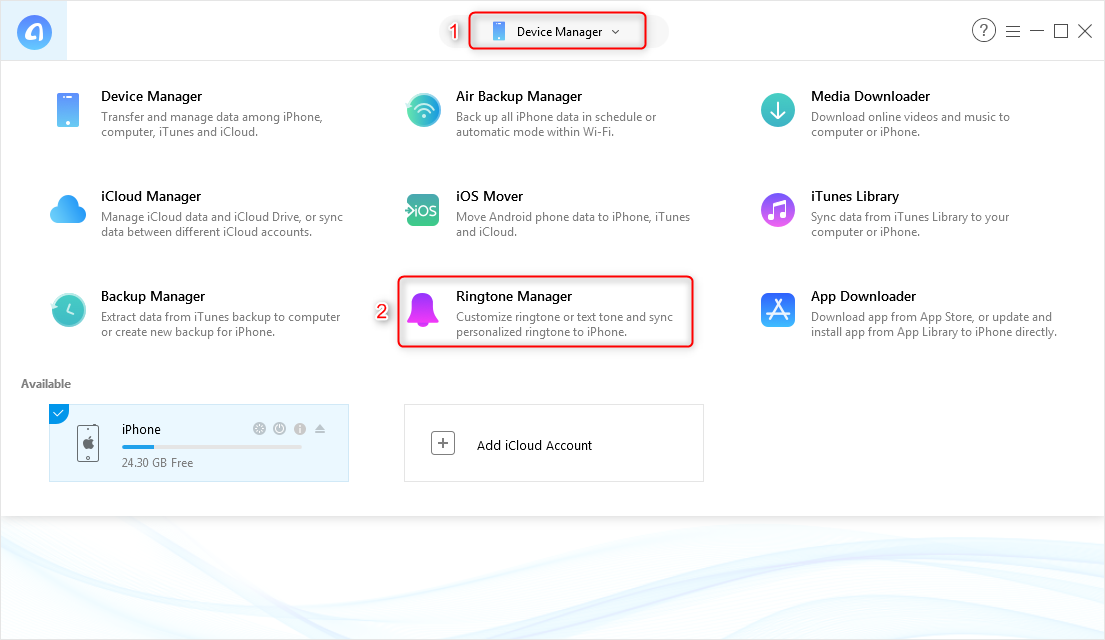

Use the trimming and split editing features of GarageBand to select the part of the song you want to hear. Remember, ringtones have a maximum duration of 30 seconds. To delete a track, tap on it to select it and tap again to show the context menu. You can now delete the placeholder noise you made earlier, leaving you with just the desired music track. If you move a finger a little, the modal picker will dismiss and you can then drop the song into the tracks. When you find the one you want, hold down on the row to make a draggable item. Some protected music cannot be imported unfortunately. You can then navigate around your playlists and albums to find a song you want to turn into a ringtone. (You can pick Audio Files and source an audio clip straight from iCloud Drive). Then select the audio source, most likely ‘Music’ to pick from the iPhone Music Library. Tap the Loops button in the top right toolbar. After the song is imported, we will delete the placeholder keyboard beat (or whatever instrument you tapped). It’s time to import your chosen song from the music library. Tap the button to take you to the project overview which shows all the tracks. You are going to delete this clip in a second, it’s just necessary to record something upfront before having access to the full editor. Select an instrument and record some random noise. If you want to use a track from your music library, follow these steps. It can literally be anything as long as the total duration doesn’t exceed 30 seconds. You can now create whatever beat, tone or sound you want to be your ringtone. To quickly start a new one, tap the + button in the toolbar. GarageBand has adopted the Files app picker so you can store GarageBand documents anywhere in iCloud Drive. Tangentially related: the new GarageBand update looks fantastic on the extra-wide iPhone X display. Download GarageBand on your iOS device to get started. If you already own the music, you can do all of this for free. If you go to the Sounds settings pane on iPhone or iPad, Apple shows you its extensive default set of available tones (and a bunch more under the ‘Classic’ section) or directs you to the iTunes Store to download music ringtones. This feature has been around for a while but it’s pretty hidden so it’s worth stepping through how you make custom ringtones with iOS. It’s still possible but a lot more cumbersome to manage.Ī little-known secret is that you can actually make custom alert ringtones for iOS on your iPhone itself, using GarageBand. Finally, tap Done from the top-right corner to save the changes.With the latest version of iTunes, Apple buried the interface for making ringtones on the Mac. To set the new ringtone for calls, go to Settings > Sounds > Ringtone, and select the custom ringtone you created from the available list.Īlternatively, you can set this for specific contacts by opening the Contacts app, tapping a particular contact, tapping Edit from the top-right corner, then scrolling down and selecting the Ringtone. The ringtone will be saved in your system Ringtones list. After the export is completed, you’ll get a pop-up as Ringtone Export Successful.Change the name of the ringtone if required, and tap Export from the top-right corner.If you get a pop-up saying “Your ringtone length needs to be adjusted”, tap Continue.Tap and hold the most recent project having the same name as that of the ringtone from the Ringtones Maker app, and select Share again.You’ll be redirected to the GarageBand app, and the custom ringtone you created will be available as one of the projects. Tap on the Arrow (>) next to the M4R file (from the last section), and tap Make to bring up the Share menu.The below steps will guide you through the process. Now that you’ve created the ringtone, you need to set it as your ringtone for calls. Set Ringtone on iPhone without iTunes or Computer One other such app you might be interested in is RingTune – Ringtones for iPhone. There are other alternatives to Ringtones Maker available on the App Store offering similar features. Tap Done from the top-right corner once you’re satisfied with your edit.Ī second (M4R) file will be now available in the app, containing your edited audio track.You can also add Fade In and Fade Out effects. Scrub the Start and End points or use the controls to trim your ringtone.Tap on the little Arrow (>) on the right side of the imported file to reveal associated options.Wait for it to be imported into Ringtones Maker. Browse and select the desired audio file.If your audio file is stored in the Files app, tap More > Import from File.Tap on the “+” icon from the bottom of the screen and select the Source.Install Ringtones Maker from the App Store and open it.

Here, we’ll use an app called Ringtones Maker. So, we can create such a 30-second ringtone from an audio clip using an app available on the App Store.


 0 kommentar(er)
0 kommentar(er)
